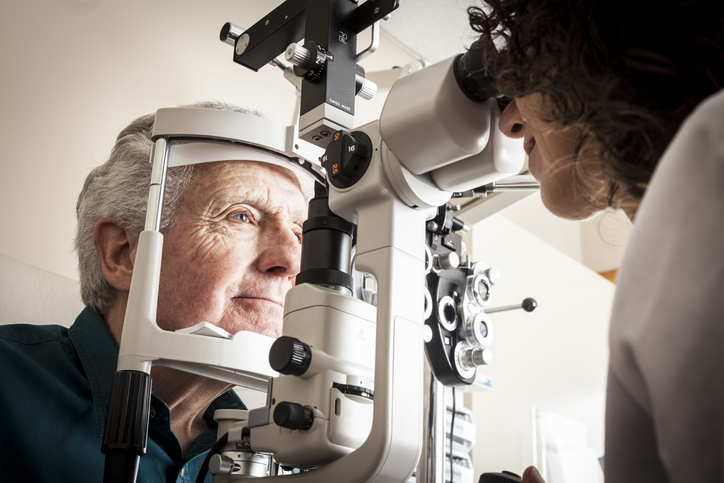
Learn what a diagnosis of macular degeneration means for seniors here.
If your aging friend or family member has received a diagnosis of age-related macular degeneration, it’s bound to raise quite a few questions and concerns. And you’re not alone; a full 11 million people in the U.S. have been given the same diagnosis, and that number is forecasted to double by the year 2050. As the provider of trusted companion care in Baltimore, MD and the surrounding area has to offer, Home With You Senior Care is on hand to share the details you need to more fully understand this disease and how to best help your senior loved one.
What is macular degeneration?
Age-related macular degeneration (ARMD) is a disease wherein the center of the retina (the macula) is damaged, impacting central vision and the details needed in reading, driving an automotive, watching the TV or a movie, and recognizing the faces of other people. It is the leading cause of irreversible central vision blindness in seniors, affecting 1 out of every 3 adults over age 75. It’s necessary to know that macular degeneration will not typically lead to full loss of vision; peripheral vision remains undamaged.
What are the two categories of macular degeneration?
ARMD can appear in two forms:
- Wet ARMD: Accounting for up to 10 – 20 percent of all diagnoses, wet age-related macular degeneration generates a build-up of drusen – deposits of fat – and an abnormality of the blood vessels under the retina. Both of these effects together result in retina damage. Wet ARMD can advance at a fast rate and result in severe and permanent loss of central vision.
- Dry ARMD: Dry ARMD makes up the greater part (up to 90%) of macular degeneration diagnoses. As with wet ARMD, drusen appears underneath the retina, causing a thinning of the macula and eventual central vision loss. Acceleration is more gradual in this type of ARMD, but it can develop to wet ARMD.
In both varieties of ARMD, early diagnosis and continual monitoring are vital to protecting remaining vision.
How is ARMD diagnosed?
All older adults should receive eye exams at least on an annual basis. To identify ARMD, the eye doctor will dilate the eyes and perform a fundoscopy, fundus photography, and a visual acuity test. If ARMD is presumed, an extra assessment, a fluorescein angiography, will very likely be required. In this test, dye is injected to recognize any leakage in the blood vessels. The Amsler grid eye test is a quick and easy tool that can also be tried at home as a first step in finding out if ARMD may be a possibility.
What options for treatment are available for ARMD?
While there’s currently no cure for macular degeneration, there are a variety of treatment options the doctor may want to try to cease the acceleration of the disease:
- Antioxidants and zinc
- Afibercept
- Ranzibizumab injections
- Pegaptanib sodium injections
- Photodynamic therapy
- Bevacizumab injections
- Vision rehab and low vision aids
Is it possible to prevent macular degeneration?
Implementing healthy lifestyle choices, like quitting (or not beginning) smoking, regularly exercising, sticking to a nutritious diet that includes an ample amount of fruits, vegetables, and fish, maintaining a healthy weight and normal blood pressure, and wearing eye protection when outdoors, including sunglasses and hats, could help decrease the risk of developing ARMD.
For trusted companion care in Baltimore, MD or any of the surrounding communities for a senior with macular degeneration to provide help with transportation, medication reminders, meal preparation, light housework, and much more, contact Home With You Senior Care at any time at 410-756-0959.
